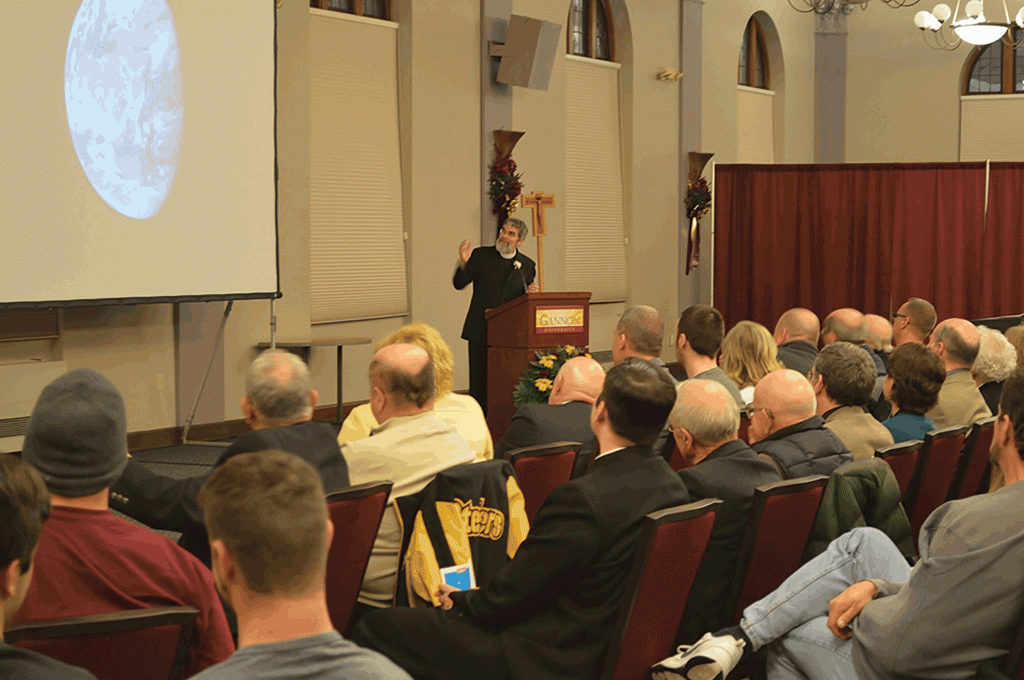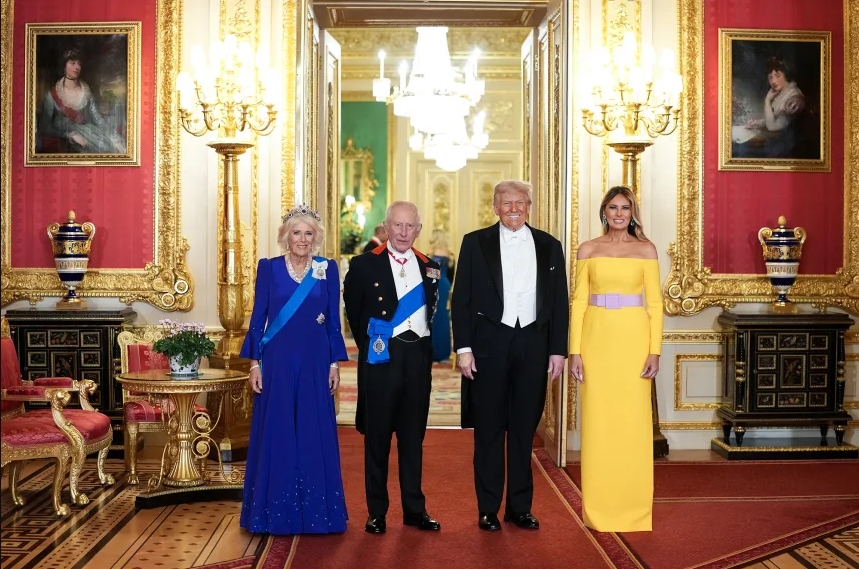Gannon University presented the inaugural Bishop Donald Trautman lecture in Catholic theology Wednesday.
The lecture, titled “God, Astronomy and the Search for Elegance,” was given by Brother Guy Consolmagno, S.J., Ph. D., a Vatican astronomer and planetary scientist of the Vatican Observatory.
Cosolmagno discussed how science is part of a search for truth and how religion paves the way for studying science. Cosolmagno punctuated the talk with a surprising wit; he even introduced himself with a joke about how his MIT ring and Roman collar proved it was possible to be both a fanatic and a nerd.
He defined science as taking something everyone has looked at a million times and questioning it once again. He spoke about theories and how they must be tested but scientists must also be willing to admit when they are wrong.
“Science doesn’t deal with proof,” he said. “It describes things. If people say science proves something, then they don’t understand science.
“Even scientific laws are just a long series of coincidences. We are ultimately fooled by theories that end up being wrong, so [those pursuing science] must have an internal attitude where they are able to admit they don’t know everything.”
He continued by saying the greater goal in studying science is to ask what the truth is.
“Science depends on the scientist,” Cosolmagno said. “They are humans with human urges.”
This was illustrated with the example of a meteorite Cosolmagno studied in Antartica. It was thought to hold evidence of interplanetary life based on four substances analyzed from the sample, including polycyclic hydrocarbons, which are organic compounds left over when organisms die and microscopic magnet crystals.
Cosolmagno said this meteor brought on a debate as to whether it could be used in argument for life on other planets.
Many fellow scientists were skeptical and said it was mere coincidence, while some were excited by the 1 in 10 chance that the compounds contained in the rock might be the product of organisms outside Earth.
The theme of theories was further explained in relation to God in the latter portion of the lecture. Cosolmagno explained that two traits made up an elegant theory: beauty and its ability to work when applied.
“The universe is filled with beauty,” he said. “Even rationality is a creation of the human imagination.
“Logic is taught as beauty, and we learn from experience. We find the truth in patterns. Science isn’t literally true any more than religion is literally true.”
Cosolmagno went on to call science a series of metaphors, much like the Bible.
“You can’t take it literally, because then you miss the point, much like people who take the Bible literally,” he said. “We don’t try to find science on our own, just like we can’t find Jesus on our own.
“Science and religion intersect in human beings. It takes a love of something deeper [than earthly goods]. A true scientist is in love with the truth. As soon as we believe all creation is good, science becomes an act of worship.”
Madison Jagoda, a sophomore pre-vetrinary major, said she enjoyed listening to Cosolmagno because it surprised her.
“He talked more about science than religion,” she said.
“He showed how it’s possible to be [involved in] both so I guess when I continue to vet school, I could keep in mind that it’s possible to be religious and work in the field of science.”
KELSEY GHERING
[email protected]








